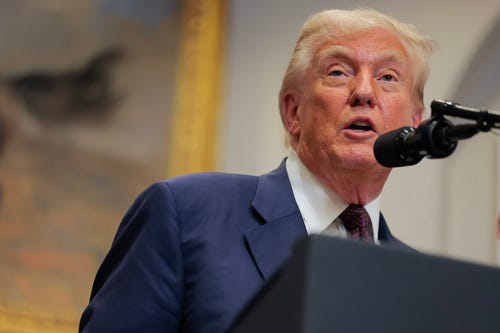On July 31, President Donald Trump issued an executive order that imposes extensive new tariffs on imports from countries all around the globe. This move intensifies an assertive trade strategy designed to stimulate manufacturing within the United States.
In a parallel action, Trump increased tariffs on Canadian goods from 25% to 35%.
These new reciprocal tariffs will be effective in just a week, ahead of the August 1 deadline that Trump had set for approximately 180 countries to negotiate trade deals with the U.S. — otherwise, they’d face higher reciprocal tariffs. Beginning this August, the new tariff rate on Canadian imports will come into play.

Start your day informed. Subscribe for daily news updates right in your inbox.
Currently, around 100 countries maintain a baseline tariff of 10% because the U.S. exports more goods to them than it receives. This latest executive order applies to an additional 70 countries.
For around 40 of these nations, U.S. tariff rates will rise to 15%. A senior official from the White House revealed that these countries export just a bit more to the U.S. than they import from it. Meanwhile, another 30 countries will face tariffs ranging from 40% on imports from Laos and Myanmar to 41% on goods from Syria. These are mainly the countries contributing to significant trade deficits with the U.S.
Goods that are part of the United States-Mexico-Canada Agreement, a trade deal put in place during Trump’s first term, will still qualify for exemptions from the new 35% tariffs applicable to Canadian imports. Trump stated that he is imposing the higher tariffs on Canada in response to issues with fentanyl crossing the northern border.
If you want to check out the full list of the new tariff rates, click here.
For context, tariffs are taxes that companies pay on imports. While some economists warn that these additional costs could lead to increased prices for consumers, Trump and his administration highlight the relatively stable inflation rates since his return to office to counter these concerns.
Previously, Trump had revealed new tariff rates affecting several other countries, with trade negotiations resulting in certain rates — like Japan’s 15%, Vietnam’s 20%, Indonesia’s 19%, and the European Union’s at 15%.
Trump had initially imposed even steeper “reciprocal” tariffs on April 2, but after some market unrest, he paused them for 90 days. However, on July 7, he extended the deadline to August 1 to allow for continued trade discussions with reluctant countries.
During this pause period, imports from most territories were subjected to only the 10% baseline tariff.
Trump’s approach to tariffs has been quite inconsistent; he often threatens new rates on goods only to retract later. This has led Wall Street analysts to coin the term “TACO trade,” with TACO standing for “Trump always chickens out.” Despite these patterns, Trump has firmly stated his commitment to the August 1 deadline — and he has followed through.
Contact Joey Garrison on Twitter @joeygarrison.
This article was originally published on USA TODAY: Trump Hits Imports with Major New Tariffs Worldwide




















